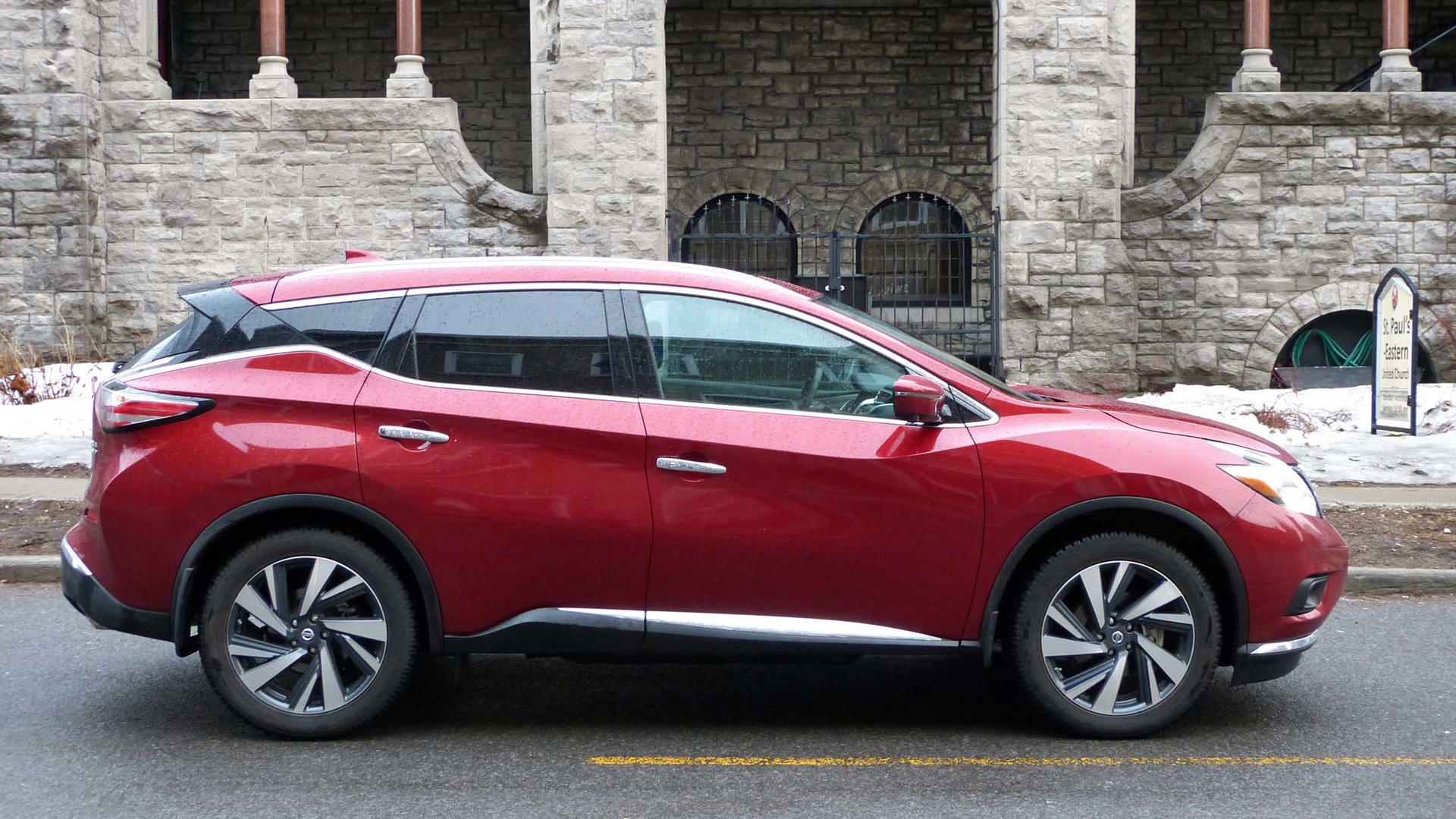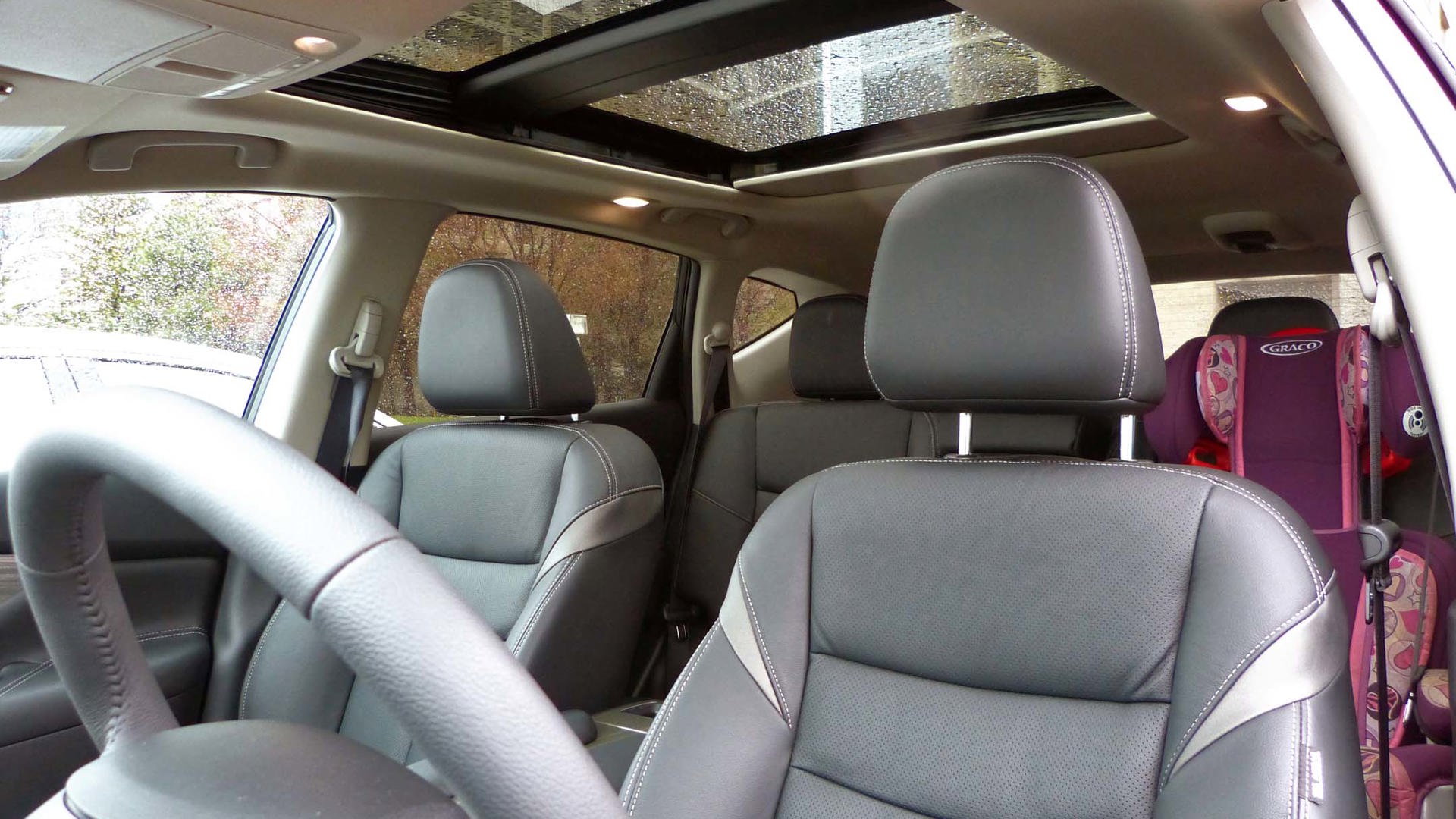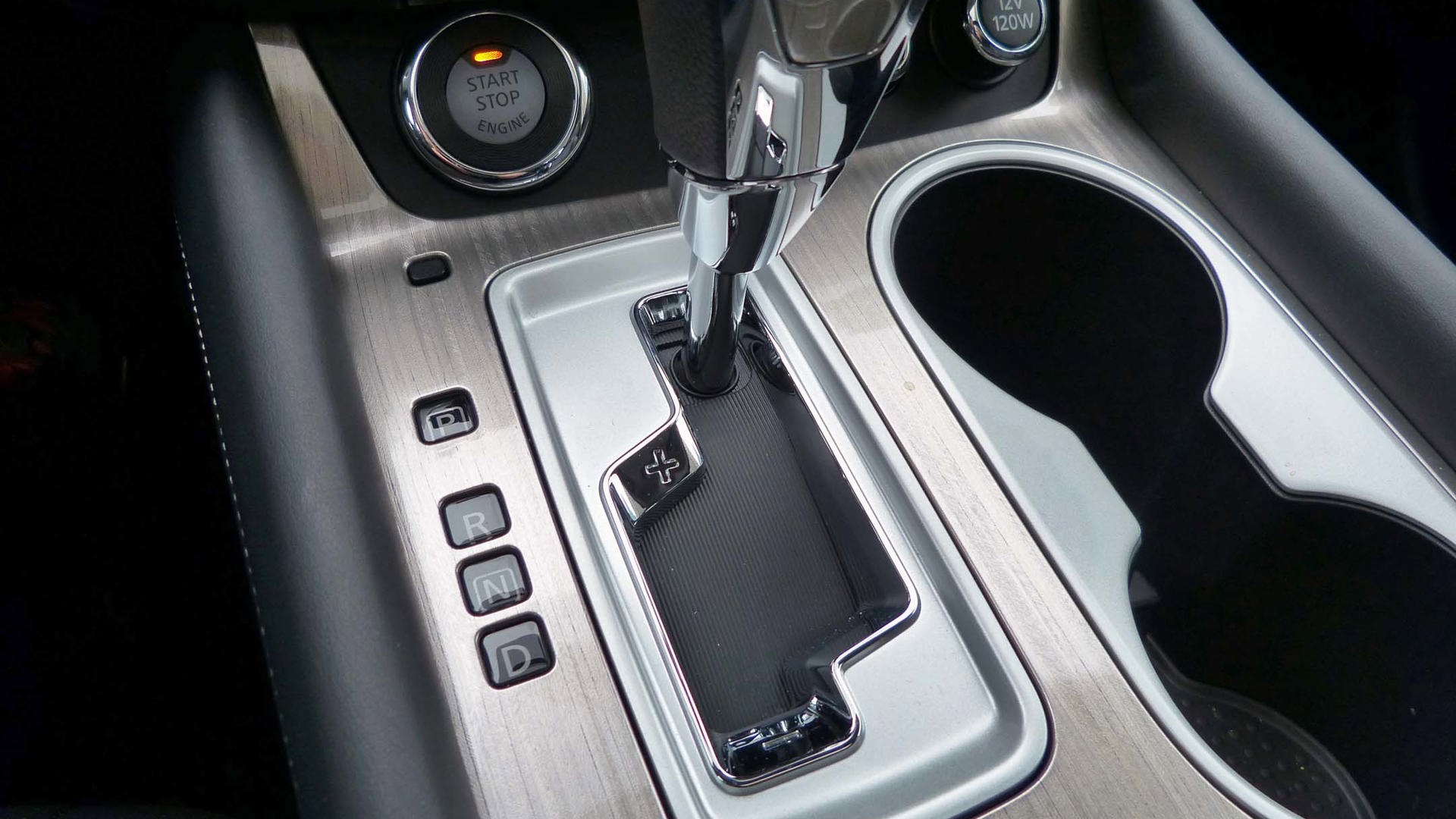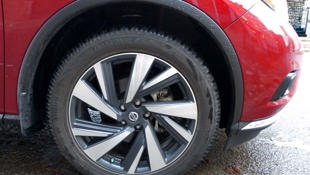 AutoTrader SCORE
AutoTrader SCORE
-
STYLING8/10
-
Safety7/10
-
PRACTICALITY9/10
-
USER-FRIENDLINESS8/10
-
FEATURES9/10
-
POWER8/10
-
COMFORT9/10
-
DRIVING FEEL8/10
-
FUEL ECONOMY6/10
-
VALUE7/10
Besieged on all sides by turbocharged four-cylinder engines, Nissan is holding the torch with a naturally aspirated 3.5L V6 in the 2017 Nissan Murano.
It’s easy to see why the Murano is so successful.
The grunty six at the heart of the Murano is one of the best-kept secrets in the industry. It’s good for 260 hp at 6,000 rpm and 240 lb-ft at 4,400 and sounds great when opened wide. It’s one of the best mid-size SUV engines this side of Ford’s twin-turbo 2.7L V6 available in the Edge.
Our tester, a $46,578 2017.5 Nissan Murano Platinum, parks that praise-worthy V6 alongside a CVT mated to a decent slip-and-grip system that powers all four 20-inch wheels when required, but more on that later.
For 2017 Nissan has leaned slightly on the Murano, giving it more driver assistance features in the lower, SV trim. Those features were already included in the Platinum trim we were in, including around-view monitor, rear cross-traffic alert, blind-spot warning, heated outside mirrors and driver attention alert.
The 2017.5 update means Apple users now get access to Apple CarPlay, but Android users will have to suffer through Nissan’s proprietary navigation for now as Android Auto isn’t available. The infotainment system is much improved and rich with information and features. The home screen does a good job of collecting the necessary information and getting you into subsections.
The audio system lets itself down slightly here though. Sound quality is good and the Sirius XM radio stations have a replay ability, but that feature is buried in the menus. It’s awkward to find and equally awkward to use. On the plus side, some hard-to-find views do allow you to see what is playing on other stations, a feature that is a bonus when you kind of like the song playing but are open to finding something better.
For example, I’m not going to turn away from Peter Gabriel’s Sledgehammer to look for a better song, but if I find out Baby Got Back is on another station I’ll jump right on over.
Our tester also had adaptive cruise control and I found it to be one of the cleverest on the market. While other units wait until they sense a gap to speed up, Nissan’s will begin to gently accelerate as soon as you indicate, helping you to move out and overtake without having to override the system. I also found it adept at gently and smoothly falling into line behind slower cars, easing out a gap instead of hauling on the anchors to build one instantly if and when someone decides to drop into your safety zone.
Given that I took the Murano on a five-hour road trip from Toronto to Ottawa, I found features like that extremely useful.
Nissan’s Zero Gravity seats also live up to the hype, delivering pillowy support for the entire six-hour drive. If anything, my backside felt better after the trip than it did when I started. These seats are wide and decently bolstered, and the little leather shoulder highlights made me chuckle. They looked like a bad superhero suit from the 1980s.
An additional neat trick – the rear seats are power-folding, operated from a button next to the steering wheel.
They are both heated and cooled, and I can’t tell you how much a warm seat and a heated steering wheel means to me on any drive, but especially a long one. Both systems have an automatic cut-off after a while, which means I had to turn them off for a few minutes and then turn them back on to get the benefit of toasty warmness the entire drive. I’m a bit like my wife’s cats in that regard, I’ll lie next to the fire until my pants melt if they weren’t blocking the way.
Aesthetically, the cockpit is a pleasant place to be with swoopy lines, decent materials and a vibrant 8.0-inch colour touchscreen in the centre stack, plus a large multifunction TFT nestled between the large, clear gauges. Even Nissan’s steering wheel works well in this space – though its plasticky inlay jars with the lovely brushed-look material in the centre console.
Nissan has done a cool thing with the bonnet, too, that improves the outlook from the cabin. It’s an odd thing, but the hood dips down and forms a pronounced ridge just in front of where the windshield ends. I found it really intriguing. It’s a good indication of designers paying attention to detail and testing simple but effective concepts. Hopefully in future generations that simplicity rubs off on the grille, which is the only thing I didn’t like about the otherwise stylish Murano.
I expected to pay a penalty for the stylish 20-inch rims in terms of ride quality but found that not to be the case. The independent suspension at all four corners does a great job of soaking up bumps and the multi-link rear suspension is composed without giving up a lot of manoeuvrability. The front twin tube struts gave a good ride, but I often feel that Nissans lean a little heavily on their front wheels – almost like there’s not enough rake in the tower and the outside front wheel is at too acute an angle.
This is further highlighted to me in our underground garages where Nissan SUVs generate tire squeal at much lower speeds and angles than other cars I drive. I would put it down to the Toyo winter tires but even other SUVs with the same tires made less noise – and the tire pressures all read normally.
Having said all that, the Murano is perfectly capable of getting around with SUV-appropriate athleticism when needed. It’s not going to set any new records on your off-ramps – but it’s not supposed to either.
Continuously variable transmissions cop a lot of flak for generating noise and robbing momentum, but Nissan has this one very well sorted. And when the engine revs do climb as the CVT “kicks down”, Nissan’s sonorous V6 is more pleasing than frustrating. The Murano’s well-insulated cabin plays a part in making sure the unpleasant, harsher sounds are blocked out and the engine shines.
A CVT’s core strengths are supposed to be fuel economy and smoothness, and while the Murano showed good smoothness, I was left flat by my highway fuel economy figure of 10.5 L/100 km. Official ratings are 11.2/8.4/9.9 city/highway/combined. CVTs reward the patient and gentle driver while giving impatient, heavy-footed steerers a giant kick in the pants and a harsh scolding. Patience is not among my short list of virtues and my poor performance in CVT-equipped cars is well-known. Your mileage may/will vary.
That gripe aside there’s a lot to like here.
The Murano was in the top five mid-size SUV sales in Canada in 2016, and third of the two-row units behind the Hyundai Santa Fe Sport and the Ford Edge. Nissan moved 13,834 Muranos – making it the brand’s third-highest volume unit behind the very-popular Rogue (40,055) and Sentra (14,281). It’s easy to see why the Murano is so successful.
The 2017.5 Nissan Murano is competent, comfortable, and comes with a hidden gem of an engine plus a rewarding array of creature comforts.
| Engine Displacement | 3.5L |
|---|---|
| Engine Cylinders | V6 |
| Peak Horsepower | 260 hp @ 6,000 rpm |
| Peak Torque | 240 lb-ft @ 4,400 rpm |
| Fuel Economy | 11.2/8.4/9.9 L/100 km cty/hwy/cmb |
| Cargo Space | 1,121 L/1,979 L seats down |
| Model Tested | 2017.5 Nissan Murano Platinum |
| Base Price | $44,548 |
| A/C Tax | $100 |
| Destination Fee | $1,795 |
| Price as Tested | $46,578 |
|
Optional Equipment
$135 – Metallic Paint $135
|
|














































